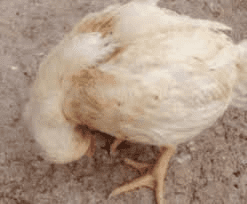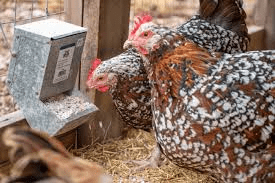For the health and productivity of your poultry chickens or birds like: (Layers, Cockerels, Broilers, Noilers and many more), it is important that they be fed diets that meet their nutritional requirements which are needed by your poultry birds.
Below are the classifications of the different Nutrients required by your birds for optimum growth and performance:
Poultry Chickens Vitamins Requirements
(1) Fat-soluble Vitamins
Vitamin A is required for the health of the membranes of the digestive, urinary, reproductive and respiratory systems.
A vitamin A deficiency can result when the level in the diet is inadequate or the vitamin added to the diet is oxidized by rancid fat in the diet.
Additionally, neomycin, a common antibiotic, decreases the absorption of vitamin A. Vitamin A is a fat-soluble vitamin and an inadequate level of fat in the diet could also limit its absorption, even if in the diet at adequate levels.
Symptoms of a Vitamin A deficiency include:
– Cheese-like, but odorless, discharge from one or more eye;
– Extremely thin birds (i.e., emaciation);
– Weak and/or uncoordinated birds;
– Ruffled feathers;
– Eyelids stuck together (referred to as sicca);
– Water discharge from the throat (referred to as roup), nostrils or eyes in young birds; and
Egg production and hatchability decrease in adults.
– A vitamin D deficiency in poultry results for an inadequate level of vitamin D3 in the diet.
– Vitamin D3 is needed for proper calcium and phosphorus metabolism and thus the formation of a normal skeleton, beak and claws, and egg shells.
– Rickets occurs in young birds while cage layer fatigue (osteomalacia) occurs in mature females.
– It can be mistaken for other causes of deforming leg weakness in poultry.

Read Also: Poultry Management during Winter Cold
A vitamin E deficiency results in a condition known as ‘crazy chick disease’ or encephalomalacia (softening of the brain). In chicks it usually occurs between 15-30 days of age.
Vitamin E is required for reproduction as well as the normal integrity of the central nervous and muscular systems.
Vitamin E is also an effective antioxidant and is an important protector of essential fatty acids (e.g. linolenic acid), vitamin A, and vitamin D3.
A vitamin E deficiency is typically caused by an inadequate level of vitamin E in the diet. In addition, vitamin E is readily destroyed by heat (a term referred to as heat labile).
A deficiency of selenium will also result in a deficiency of vitamin E. Selenium levels are low in some areas of the country resulting in lower levels in cereal grains.
Symptoms of a Vitamin E deficiency include:
– Uncoordination
– Tremors
– Rapid contractions and relaxation of the legs resulting in what is known as ‘crazy chick disease’
– Testicular degeneration in adult males resulting to decreased fertility
– Increased embryonic mortality
– A vitamin E deficiency resembles Avian Encephalomyletis (AE), Newcastle Disease (AE), and a vitamin B1 deficiency.
Read Also: Types and Recommended Duration for your Physical Activity
Vitamin K is required for the production of prothrombin which is essential in blood clotting. So a deficiency of vitamin K results in an increase in hemorrhaging. It can cause increased embryonic mortality, with the dead embryos having hemorrhaging conditions.
A vitamin K deficiency can be caused by a deficiency of vitamin K in the diet. High levels of sulfaquinoxaline, a medication for prevention or treating coccidiosis in chickens and turkeys.

(2) Water-soluble Vitamins
Vitamin B1 deficiencies result from an inadequate level in the diet. Other causes of a deficiency include excess Amprol (used to treat or control coccidiosis) in the diet; moldy feed; or by rancid fat oxidation. A deficiency typically takes three weeks to develop.
Vitamin B1 is needed for formation of a coenzyme involved in the function of the nervous system. A vitamin B1 deficiency resembles Avian Encephalomacia (AE), vitamin E deficiency and Newcastle disease.
Symptoms of a vitamin B1 deficiency in young birds include:
-Nervousness
– Ruffled feathers
– Leg weakness
– Unsteady gait
– Paralysis (convulsions with head retraction) called polyneuritis
– Star-gazing (head retracted due to paralysis of the anterior muscles of the neck)
Symptoms of a vitamin B1 deficiency in adults include:
– Blue comb
– Decrease in respiration rate
– Lowered body temperature
Read Also: Poultry Management during Winter (Cold)
Vitamin B2 is a cofactor in many enzyme systems. Most are associated in oxidation-reduction reactions that are involved in respiration.
A vitamin B2 deficiency can be mistaken for Marek’s disease since both have enlarged peripheral nerves.
Symptoms of a vitamin B2 deficiency include:
– Curled toes
– Poor growth
– Weak and emaciation in young birds
– Decrease in size of leg muscles (i.e., atrophy)
– Skin is dry and harsh
– Poor hatchability and egg production in adults
– Dead embryos with ‘clubbed’ down feathers.
– Turkeys have severe dermatitis (i.e., inflammation of the skin) in the feet and shanks as well as incrustations on the corners on the mouth.

